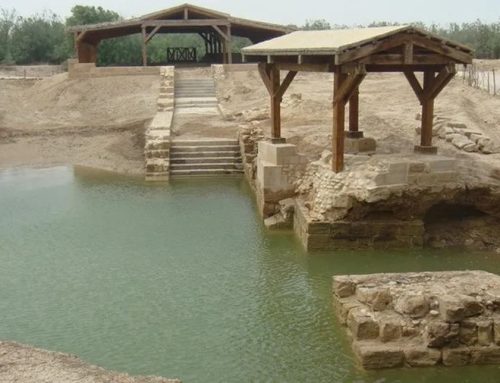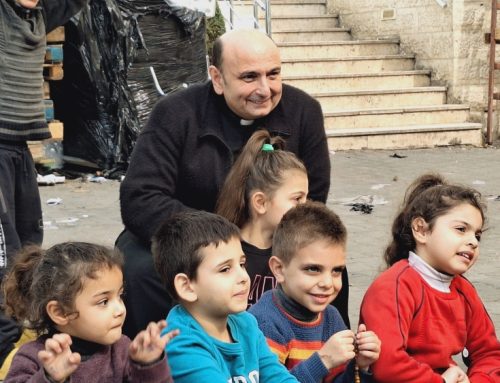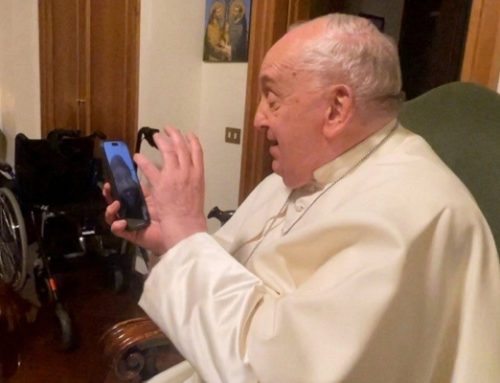This article is an intelligent summary of the events that have had impact on the Christian community in the Holy Land during the past five months as the Al-Aqsa Intifada roared. By Drew Christiansen This article is an intelligent summary of the events that have had impact on the Christian community in the Holy Land during the past five months as the Al-Aqsa Intifada roared. The disappointment of the Year 2000 Jubilee in Bethlehem, Israeli targeting of Christian communities for bombardment, the threat of Christian emigration and the need to "never repay evil with evil" is covered in great detail. Ultimately Father Drew calls us to action to mobilize Christian support for Holy Land Christians, the descendents of Christ's original followers and disciples. American Christian solidarity with Holy Land Christians is essential if we are to continue to enjoy a living Christian presence in the land where Christianity was born.
<b><div align="center">Christmas, Christians and the Intifada
by Drew Christiansen</div></b>
FOR PALESTINIANS, CHRISTMAS 2000 was to have been a celebration not only of the second millennium of Jesus' birth in which they would play host to the Christian world. It also was to have marked the emergence of Palestine as a destination for world travel with Bethlehem as its center. The World Bank and donor countries had poured hundreds of millions of dollars into David's city to repair the long neglected infrastructure and to construct new facilities to receive the millions of pilgrims expected to mark the Great Jubilee in the Holy Land.
Even before Ariel Sharon in the company of a thousand troops visited the Haram al Sharif, what Jews call the Temple Mount, in late September, the number of pilgrims had fallen short of expectations, partly due to the anxiety spurred by the collapse of the Camp David talks at the end of July. By Christmas Eve, with a cold rain falling, only small knots of foreign pilgrims and local worshippers were to be found in Manger Square. The millennial crowds never appeared, intimidated by the Palestinian intifada and the punishing Israeli retaliation against the uprising. Foreign entertainers cancelled their programs, and the residents of Bethlehem and their neighbors wanted to mourn the three hundred fifty Palestinians killed and the thousands wounded rather than to celebrate.
In the weeks leading up to Christmas, Bethlehem and the neighboring towns of Beit Jala and Beit Sahour had been particularly hard hit. December 11 the Latin (Roman Catholic) seminary in Beit Jala had been the center of a three-hour barrage by Israeli gunners. In addition to the seminary, the neighboring rectory and parish house were damaged. The same week the Orthodox churches of Saint Nicholas and Saint Michael in Bethlehem, the oldest churches in the town after the Church of the Nativity, were also hit by shelling.
In the West these attacks went unnoticed, even after statesmen and religious leaders had wrung their hands for weeks over the need to respect holy sites and prevent a nationalist conflict from exploding into a holy war. Local Christians were trapped in a classic double bind. They did not want their homes and churches subject to Israeli shelling, but neither did they want to appear to flag in their allegiance to the Palestinian cause. So, they made no special pleas for immunity for themselves and their institutions. Under the laws of war, of course, civilians are supposed to be immune to attack. The Israeli Defense Force (IDF) should have taken measures to reduce the impact on non-combatants, and is forbidden from reprisals that take indiscriminate aim at civilian areas.
It is fairly widely acknowledged that the gunmen who used the Christian triangle-Beit Sahour, Bethlehem, and Beit Jala-just south of Jerusalem for cover, thereby inviting Israeli counterattacks, were not local. Some observers claimed they came from nearby refugee camps, others that they were Fatah militia, others that they were Israeli provocateurs. Each allegation had a plausible basis. Hard facts are difficult to find.





